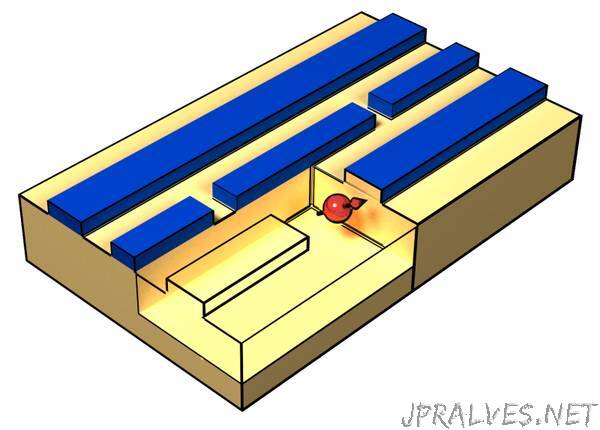
“Applying spin-based quantum sensors, a new detector protocol was developed by the NIM scientist Dr Friedemann Reinhard and his team. Compared to state-of-the-art detectors, considerably higher frequencies can be detected, potentially even single photons and phonons.
Spin-based quantum sensors can detect high-frequency signals – up to the GHz range. NIM-scientist Opens external link in new windowDr Friedemann Reinhard and his team are one of the two first groups to present such a measurement protocol and they published their results recently in Opens external link in new windowNature Communications, together with similar Opens external link in new windowresults of a team led by the Universität Ulm.
“It is a new approach to utilize single solid-state spins as highly sensitive detectors in the high-frequency range. On this basis, single microwave photon and single phonon detectors, relevant for sensors, radio astronomy and quantum communications, could be developed.” Reinhard summarizes their advancement.
Quantum optical effect
Single magnetic dopant atoms (“spins”) in semiconductors are promising candidates for quantum computers, quantum communication and quantum sensing. In all approaches, signal detection is a crucial aspect, for example to receive quantum mechanically encrypted messages or to detect weak magnetic fields. So far, efficient detection was feasible only in the low-frequency range up to several MHz.
The new protocol – in a way the quantum software of such detectors – is based on the Mollow triplet, a quantum optical effect known for almost fifty years. The core novelty of the NIM team’s scheme is a more robust method to induce this effect, and its application as a sensor for high-frequency signals. An additional aspect of the detector protocol is its stability as Reinhard explains: “Crucially, the absorption frequency of our scheme depends only on the timing and the frequency of the quantum control we apply, so we can tune it by experimental parameters. It is independent of the detector spins natural transition and hence stable even in a fluctuating external magnetic field.“
„Light in a bag“
Signals in the published study are weak but still consist of a quadrillion of microwave light particles. To produce a competitive detector, there is one last hurdle. “To push sensitivity down to the level of single light particles, the radiation has to be amplified. A possible set-up is to cage it in between two mirrors. This idea is comparable to the Gothamists´ attempt to catch light with a bag. Sounds like a wired idea, but lining the bag with mirrors could be the solution.“ illustrates Reinhard. Inspiration for this approach was a tale fascinating him already as a child. Presently, the group does not master this technique, but others - even another team of NIM – fabricate these devices on a routine basis.
Secure data encryption
One potential application field for such new detectors could be quantum communication. It uses single light particles – photons – to transmit messages. Especially regarding data safety this technique provides a clear improvement compared to traditional algorithms, as quantum particles protocol every attempt to eavesdrop.
Some of the best quantum processors, for example those used by Google, already operate on single microwave photons. Sensitive transmitters and receivers could help to broadcast these particles over long distances – a new channel of quantum communications.
Quantum microphones for single sound particles
Some micro- and nanostructures support long-lived mechanical oscillations. The weakest of those oscillations are described as quantum mechanic sound particles – phonons.
While research on these nanostructures has become a booming area of research, manipulation of single phonons is difficult as methods for creation and detection of these particles are still in their infancy. Applying the new technique, solid-state spins become candidates for these tasks – providing quantum microphones and quantum loud speakers.
Quest for life out there
Arguably the most exotic application for the detectors could be located in another research field. “Detection of very weak, narrow-band radio signals would be a “litmus test“ for extraterrestrial life. Some radio telescopes already use solid-state spins as receivers for such radiation. Our technique might be able to improve the receivers and, ultimately, help to find life out there. A big aim for quantum science.” Tells Reinhard about the broad application possibilities with a smile.”
